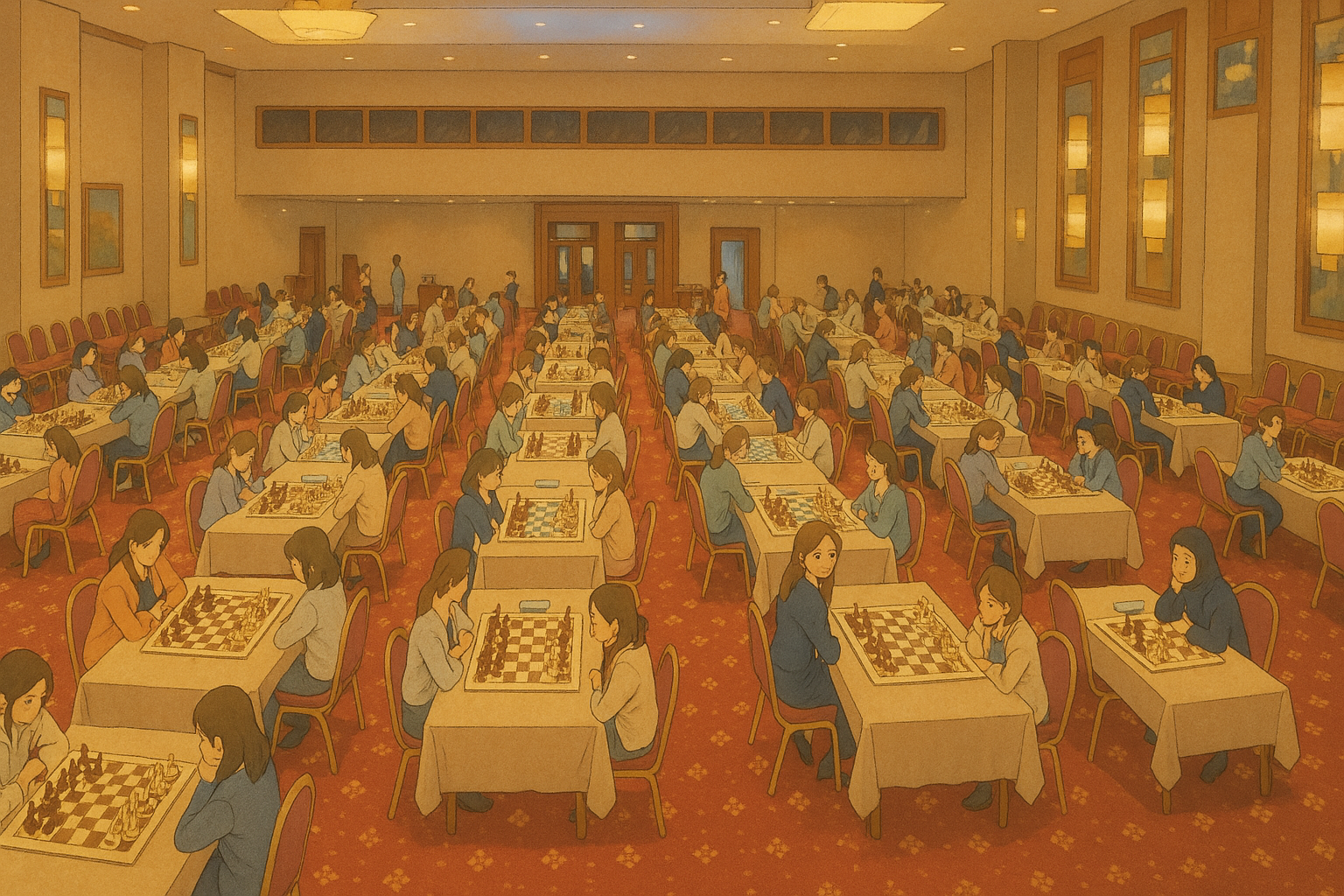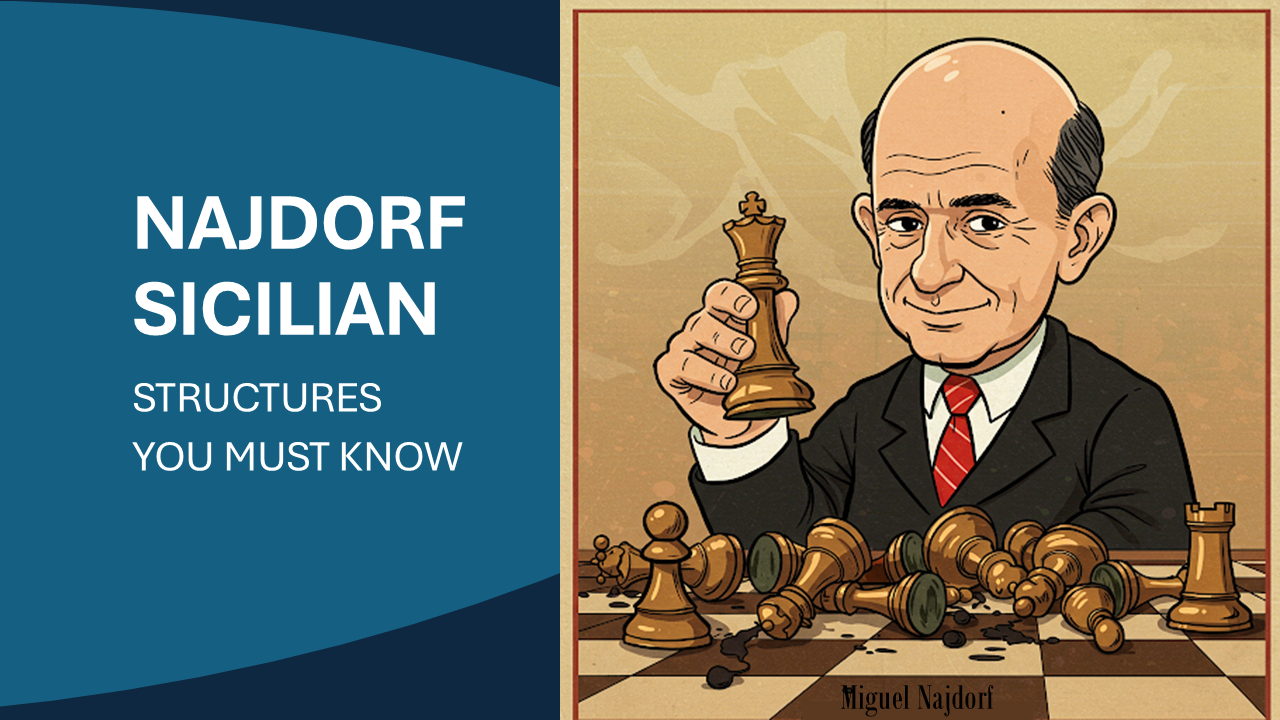Classical Sicilian is one of the main weapons against 1.e4, especially for a must-win situation. It is known for it’s dynamic and imbalanced nature. Unlike it’s cousin opening Najdorf, Classical Sicilian has much less theory and lot more based on concepts. Therefore in order to play Classical Sicilian it is important to learn the pawn structures to get a better understanding of the concepts. In this chronicle, I present 6 Must know Classical Sicilian pawn structures that will help you understand this opening better.
What is Classical Sicilian?
Before we dive into the analysis of the pawn structures let’s understand the initial moves.
In this chronicle, we will be focusing on pawn structures arising after 6. Bg5 – Richter-Rauzer Variation. There are other 6th move alternatives for white like the Sozin Variation, English Attack, etc. which is will be separately covered in another chronicle.
My personal experience with Classical Sicilian
While I’ve only explored the Classical Sicilian in twelve database games—my sister, Trisha, is the true expert with over 160 games—I find it a fascinating opening to learn and play. One of my most memorable experiences was facing then-newly-minted Grandmaster Javokhir Sindarov of Uzbekistan at the 2019 World Schools U15 Championship.

Read more about my performance at World Schools 2019: ATC player bags Silver
Classical Sicilian Structure #1:
Key Characteristics:
- White has pushed pawn to f5
- Black has pushed pawn to h5 and b5

Black faces weaknesses in their pawn structure and king position, but compensates with a bishop pair, strong control of the central e5-square, and queenside space.
White’s strategic objectives are:
- Exploiting e6 to create a weakness on d5 through maneuvers like Nc3-e2-f4, g2-g3, and Bh3.
- Opening the center with fxe6 followed by e4-e5, capitalizing on developmental advantage.
- Applying pressure on d6 using heavy pieces along the d-file.
- Targeting the isolated h-pawn with a rook lift to h3.
Black’s counter-strategies involve:
- Leveraging the e5-square, placing a knight in the middlegame and a bishop in the endgame (Bh6-f4-e5).
- Expanding on the queenside to open files and weaken dark squares (…a6-a5, …b5-b4, etc.).
- Attacking g2 with …h5-h4 and …Rg8, limiting White’s attacking potential.
- Aiming for a favorable endgame, particularly a queenless scenario where their bishop pair dominates White’s knight and light-squared bishop, combining play along the g-file with pressure on e4 and queenside pawn play.
Classical Sicilian Structure #2:
Key Characteristics:
- White has pushed pawn to f5
- Black has pushed pawn to b4 and e5

White’s successful provocation of Black’s e6-e5 advance, which creates a weakness on d5. Black often aims to redirect White’s c3-knight with …b5-b4 before this advance.
White’s strategic objectives are:
- Establishing control of the d5-square, ideally with a knight, or more often with a bishop, to exert positional pressure.
- Exploiting weaknesses on d6 and h5, understanding that kingside attacks may allow Black queenside counterplay.
Black’s counter-strategies involve:
- Initiating queenside pawn expansion, even without e5 control, while managing the d5-square.
- Focusing pressure on the fixed e4-pawn with piece maneuvers like …Bb7, …Rg8-g4, and …Nb8-d7-c5, which is especially effective in endgames.
- Executing the d6-d5 pawn break, particularly in endgames after White’s f4-f5, creating a protected passed pawn.
- Utilizing g-file pressure with …Rg8-g4, targeting both g2 and the vulnerable e4-pawn.
Classical Sicilian Structure #3:
Key Characteristics:
- White has not committed any pawn push
- Black has pushed pawn to b5 and h5

This pawn structure shares similarities with the two preceding structures. White’s f4-f5 leads to Structure 1, while Black’s …e6-e5 transforms it into Structure 2. However, this structure offers White increased flexibility, particularly with the e4-e5 pawn break. This opens the position and allows the knight to occupy e4, especially effective when White has a developmental advantage or Black’s pieces are uncoordinated.
In addition to standard Black plans like queenside expansion, pressure on e4, and g-file pressure, Black can also play …f6-f5. This creates a highly double-edged situation, enhancing Black’s queenside attack but opening the center and making d6 vulnerable, requiring careful calculation.
Watch: Henry’s interesting bishop sacrifice on b5 in Classical Sicilian
Classical Sicilian Structure #4:
Key Characteristics:
- White’s e4-pawn is isolated
- Black’s f6-e6-d6 is are delicate

This pawn structure results from White’s aggressive f2-f4-f5 push, culminating in fxe6. White gains an open game, leveraging the exposed Black king (due to the absence of a pawn on f7). However, Black possesses a superior pawn structure, central control, and a strategically vital e5-square, often occupied by a knight. Black’s favorable pawn structure translates to advantageous endgames.
White’s Strategic Aims:
- e4-e5 Advance: This thematic breakthrough aims to disrupt Black’s structure. If Black responds with …dxe5, White must play energetically to compensate for the pawn loss, risking central control.
- Knight Sacrifices on d5/f5: These sacrifices exploit the Black king’s vulnerability. Accepting these sacrifices allows White to open the e-file and establish a strong outpost on e6.
- Pressure on e6: Exploiting the lack of an f7-pawn, White targets e6, ideally provoking e6-e5 to further weaken Black’s structure.
Black’s Strategic Aims:
- Control of e5: Crucial for blocking White’s e4-e5 advance. Black typically places a knight on e5, which defends d6 and participates in queenside attacks.
- Simplification and Endgame Transition: Black seeks to trade pieces, capitalizing on their superior pawn structure. White’s e4-pawn becomes a weakness, and Black controls the e5-square and semi-open c and g files.
If you’re looking to master the Classical Sicilian, I’d strongly advise checking out the book by Grandmasters Kozul and Jankovic. These Croatian GMs are true pioneers of the opening, having built their careers on it with significant success. They’ve generously shared their insights here: The Richter-Rauzer Reborn: The Kozul Variation
Classical Sicilian Structure #5:
Key Characteristics:
- White’s fixed e4 pawn
- Black’s double pawn on e-file

This specific pawn structure, characterized by the absence of queens, originates from a variation where Black sacrifices a pawn by allowing Qxf6, followed by …Qe5, forcing a queen exchange. Experience demonstrates that Black achieves sufficient compensation for the pawn deficit. The doubled e-pawns, far from being a liability, exert significant control over central squares. Moreover, Black possesses a bishop pair and active play along the g-file, contributing to their counterplay.
Also Read: Indian Chess Prodigies: The New Wave Dominating the Global Arena; Likes of Pragg, Gukesh and Arjun have sucessfully employed Classical Sicilian into their repertoires
Classical Sicilian Structure #6:
Key Characteristics:
- White’s f5 and d5 pawn lock in black’s f6 and d6 pawn respectively
- Black’s e5-pawn is a passer

The structural setup we’re discussing occurs when Black sacrifices their light-squared bishop for White’s knight on d5, resulting in a position with opposite-colored bishops. This arrangement usually favors Black, primarily because their king is more secure, often finding an ideal position on e7, which also connects their rooks.
Black’s typical plan involves: weakening White’s kingside dark squares through pawn advances like …a7-a5-a4-a3. Another common tactical maneuver is the bishop transfer …Bf8-h6-e3-d4, especially when Black’s queen is well-placed on c5. In queenless endgames, Black often focuses on attacking the g2-pawn, sometimes inducing h2-h3 to create a weakness. The protected passed e5-pawn can become a significant advantage in the endgame. White might try to disrupt Black’s coordination by placing a bishop on c6, but this bishop frequently becomes isolated and a target for Black’s pieces.









